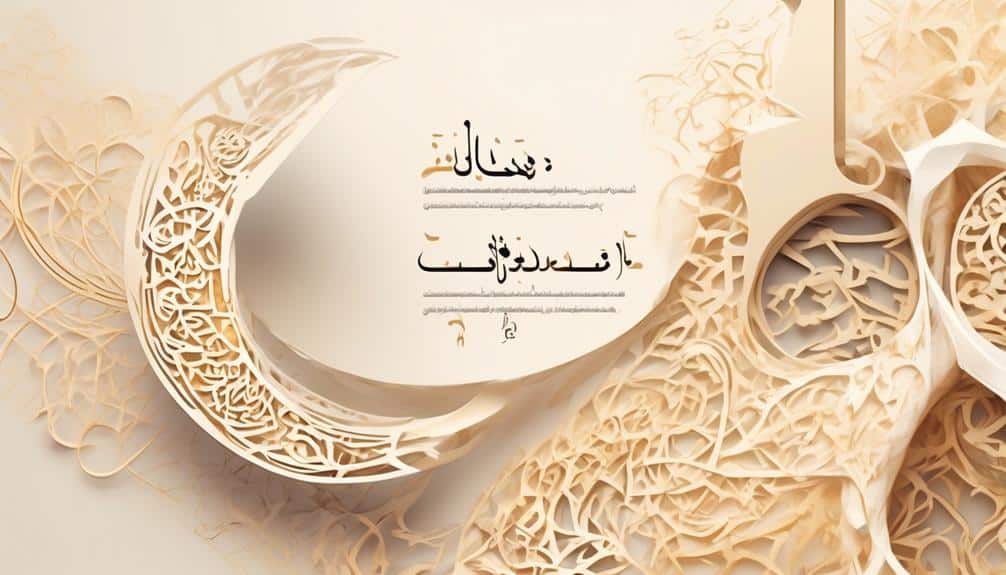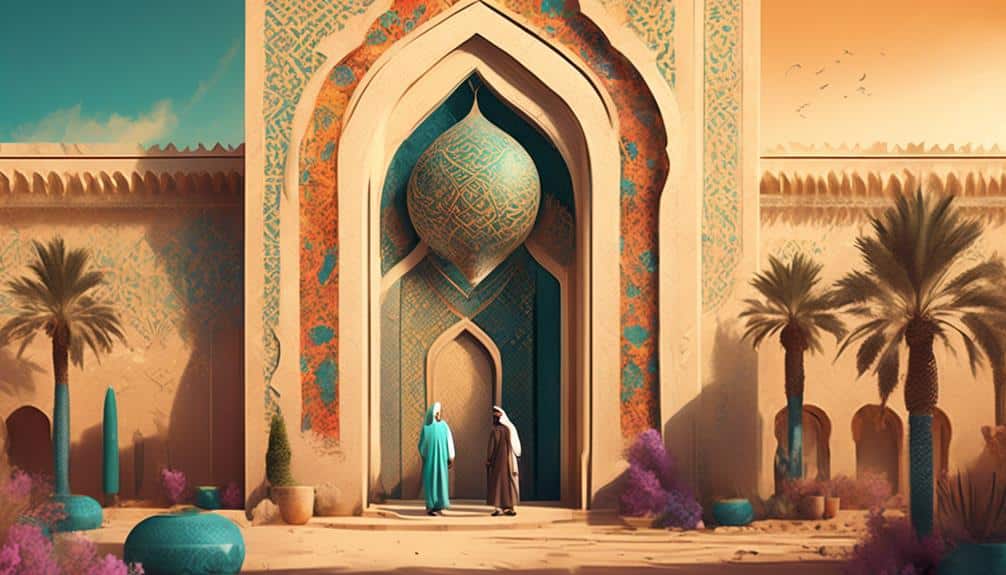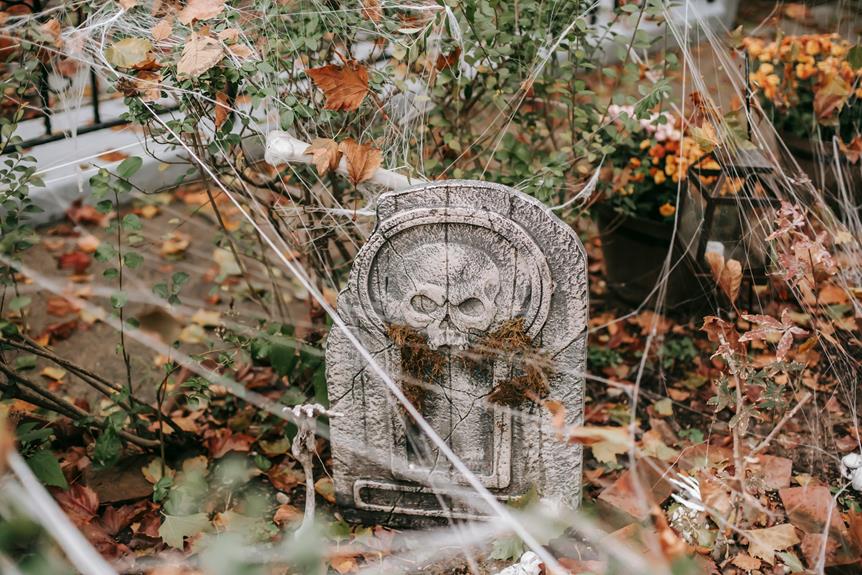In the bustling city of Riyadh, where tradition and modernity intersect, there is a growing movement towards innovative web design that seamlessly merges the rich cultural heritage of Saudi Arabia with cutting-edge technology.
From embracing Arabic calligraphy in web design to integrating traditional patterns and colors, designers in Riyadh are pushing the boundaries of creativity to create visually stunning and culturally resonant online experiences.
But what sets these designs apart is not just their aesthetic appeal; it is the way they engage users through interactive features that captivate and immerse.
In this discussion, we will explore how web designers in Riyadh are embracing the past while embracing the future, and the impact this has on the digital landscape of the city.
Embracing Arabic Calligraphy in Web Design

Arabic calligraphy, with its rich history and artistic beauty, is increasingly being integrated into web design to create visually striking and culturally authentic digital experiences. The use of Arabic calligraphy in web design is a reflection of the growing appreciation for the beauty and cultural significance of this ancient art form.
One of the key reasons why Arabic calligraphy is being embraced in web design is its ability to convey a sense of authenticity and heritage. By incorporating Arabic calligraphy into website interfaces, designers are able to create a unique and culturally relevant user experience that resonates with Arab audiences.
Furthermore, Arabic calligraphy adds a touch of elegance and sophistication to web design. The intricate and flowing nature of Arabic script adds a sense of artistry and craftsmanship to digital interfaces, elevating the overall aesthetic appeal of websites.
In addition to its visual appeal, Arabic calligraphy also plays a functional role in web design. The unique shapes and curves of Arabic letters can be utilized to create interesting and dynamic layouts, enhancing the visual hierarchy and guiding the user’s attention.
Integrating Traditional Patterns and Colors

Building on the success of incorporating Arabic calligraphy into web design, designers in Riyadh are now exploring the integration of traditional patterns and colors to further enhance the cultural authenticity and visual appeal of digital experiences.
By incorporating traditional patterns and colors, web designers in Riyadh are able to create unique and visually stunning websites that reflect the rich cultural heritage of Saudi Arabia.
Traditional patterns, such as geometric designs and intricate motifs, have long been a significant part of Saudi Arabian art and design. These patterns not only add aesthetic value but also hold symbolic meanings that resonate with the local population. By incorporating these patterns into web design, designers are able to create websites that are both visually appealing and culturally relevant.
Colors, too, play a crucial role in Saudi Arabian culture. Vibrant hues such as deep reds, vibrant blues, and earthy browns are often associated with the region’s traditional clothing, architecture, and landscapes. By integrating these colors into web design, designers can evoke a sense of familiarity and nostalgia among users.
The integration of traditional patterns and colors in web design not only adds a touch of cultural authenticity but also helps create a unique and memorable digital experience. Riyadh-based designers are at the forefront of this innovative approach, merging tradition with technology to create visually captivating and culturally meaningful websites.
Engaging Users With Interactive Features

To enhance user engagement and create dynamic digital experiences, web designers in Riyadh are incorporating interactive features that captivate and captivate users. These features go beyond the traditional static layout of websites, offering users a more engaging and interactive experience.
One of the popular interactive features being used is parallax scrolling, where the background of the website moves at a different speed than the foreground, creating a sense of depth and immersion. This technique can be particularly effective when showcasing products or telling a story.
Another interactive feature gaining popularity is the use of hover effects. By incorporating hover effects, designers can create interactive elements that respond to the user’s mouse movements, providing a more tactile and engaging experience. This can include revealing additional information, changing colors or images, or triggering animations.
In addition to parallax scrolling and hover effects, web designers in Riyadh are also leveraging interactive sliders, video backgrounds, and interactive forms to engage users. These features not only provide a visually appealing and interactive experience but also allow users to actively participate and explore the content.
Frequently Asked Questions
How Can Arabic Calligraphy Be Effectively Incorporated Into Web Design?
Arabic calligraphy can be effectively incorporated into web design by selecting appropriate fonts, integrating it strategically within the layout, and utilizing it to enhance the overall visual appeal and cultural identity of the website.
What Are Some Examples of Traditional Patterns and Colors That Can Be Used in Web Design?
In web design, traditional patterns and colors can be effectively incorporated to create a visually appealing and culturally relevant experience. Examples include geometric patterns, intricate motifs, and vibrant color palettes inspired by local art and architecture.
How Can Interactive Features Be Implemented to Engage Users on a Website?
Interactive features can be implemented on a website to engage users by incorporating elements such as interactive menus, sliders, videos, animations, and social media integration. These features enhance user experience, encourage interaction, and promote user retention.
Are There Any Specific Guidelines or Best Practices to Follow When Integrating Traditional Elements Into Web Design?
When integrating traditional elements into web design, it is crucial to follow specific guidelines and best practices. These can include maintaining a balance between tradition and modernity, incorporating cultural symbols, and ensuring usability and accessibility for all users.
Can You Provide Some Examples of Successful Websites That Have Effectively Merged Tradition With Technology in Riyadh?
There are several successful websites in Riyadh that have effectively merged tradition with technology. These websites showcase a seamless integration of traditional elements such as Arabic calligraphy and cultural motifs with modern web design techniques and functionalities.
Conclusion
In conclusion, the innovative web design in Riyadh successfully merges tradition with technology through the incorporation of Arabic calligraphy, traditional patterns, and colors, as well as engaging interactive features.
By embracing these elements, web designers in Riyadh create visually appealing and culturally rich websites that cater to the local audience and promote the cultural heritage of the region.
This fusion of tradition and technology showcases the city’s commitment to preserving its heritage while embracing modern advancements.

